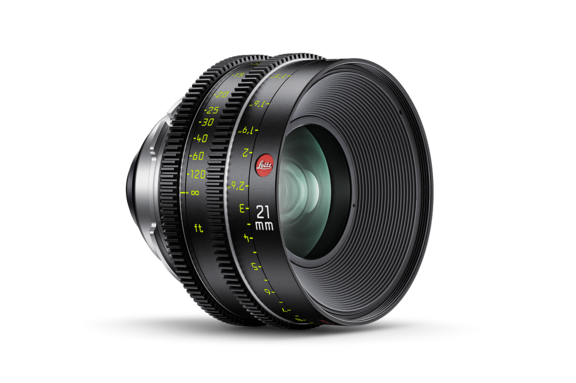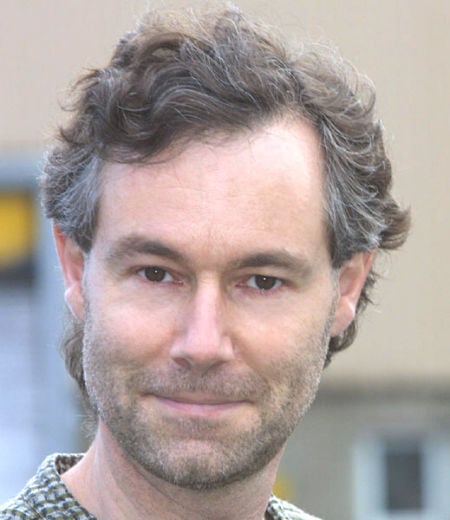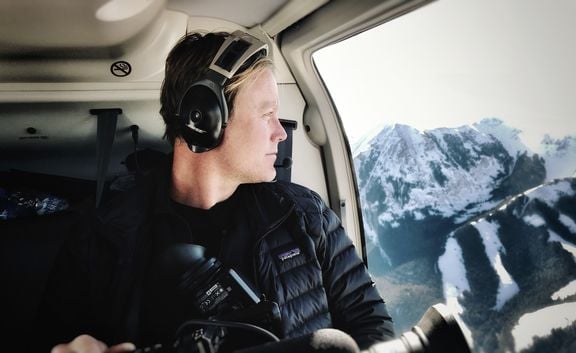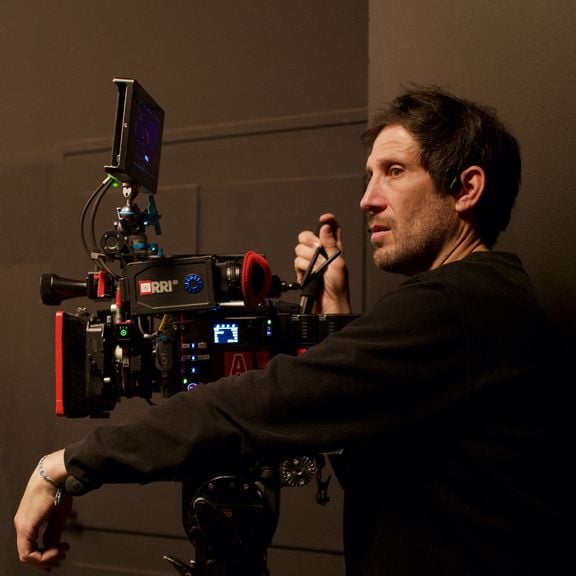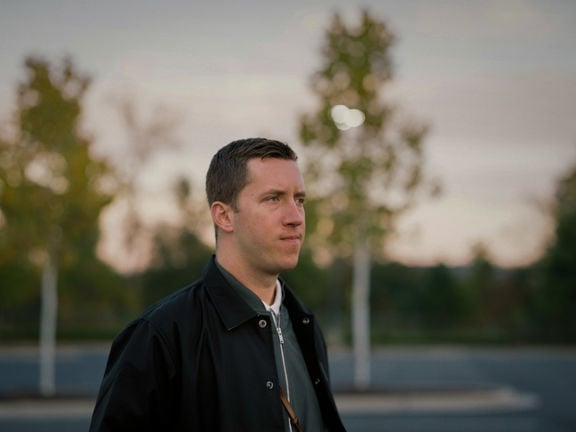BALAZS BOLYGO, BSC TAKES LEITZ HUGOS ON A GRITTY THRILL RIDE FOR DISNEY’S SUSPECT
Suspect: The Shooting of Jean Charles de Menezes (2025)
The Disney series Suspect: The Shooting of Jean Charles de Menezes tells the story of the manhunt following the suicide bombings in London on July 7, 2005. Written and executive produced by Jeff Pope and directed by Paul Andrew Williams, the story follows several different threads from the Metropolitan Police to the bombers themselves in this first look at a story that dominated headlines while many details were kept from the public. Cinematographer Balazs Bolygo, BSC discusses his choice of Leitz HUGO lenses and Sony cameras to capture this action-packed series.
Seth Emmons: What is the story behind Suspect: The Shooting of Jean Charles de Menezes?
Balazs Bolygo, BSC: Suspect is a 4-part series about the London bombings in 2005. Four bombs went off in London killing 53 people, three on the tube, and one on the bus. Two weeks later there was another set of suicide bombers who tried to do it again, but they got their mixture wrong and didn’t blow up anything. They all escaped and went on the run. During the whole police procedure of the investigation and manhunt an innocent Brazilian man named Jean Charles de Menezes was shot by police on the tube. The Independent Police Commission went in to investigate and were stopped from investigating the police procedures. One of the investigators blew the whistle to the media. The series centers around the police investigation, the failures they made, and the mistakes that led them to shoot an innocent man. It’s quite an interwoven, thriller-esque kind of story. The series stars Edison Alcaide, Conleth Hill, Max Beesley, and Emily Mortimer.
The series was written by Jeff Pope and directed by Paul Andrew Williams. They’ve worked together on quite a few projects before, including the Cary Grant biopic Archie and The Walk-In. I know Jeff from almost working on his Laurel and Hardy biopic Stan and Ollie.
What were some of the visual language elements you put together for this series?
We had quite a few references for the look, including some obvious ones like Zero Dark Thirty, The Mauritanian, and The Last Panthers, which was a French series. Some of those felt similar in style. But we did want a feeling of authenticity. I want the audience to feel that they aren’t watching something heightened, but a genuine retelling of what happened. We didn’t want to undermine what was being portrayed so we took a more naturalistic approach.
From the beginning one of the ideas was to humanize the bombers. I didn’t want them to be simply two-dimensional characters. I wanted the audience to understand why they were doing what they were doing, even if you don’t agree with it. On the flip side, I wanted the police to be in a less empathetic light. They were more chaotic with dealing with information and more distant. I wanted to have a very different feel between the two main groups of characters.
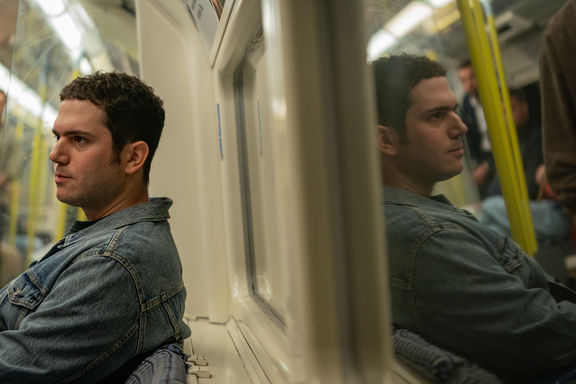
How did you go about creating those different feelings visually?
Because I wanted the bombers to feel a bit more organic and a bit more personable, I wanted the audience to feel physically closer to them. This is where the Leitz HUGO lenses came in. I shot everything related to the bombers on the HUGOs, and primarily wider lenses like the 35mm and the 28mm. The police, however, were shot anamorphic. I wanted a totally different look between the two and shooting anamorphic meant using longer focal lengths at a distance, not going so wide, and in a funny way a slightly cleaner look to the police.
For the bombers I was usually four or five feet away on a 28mm or 35mm HUGO at T2 or T2 and a half, whereas the police were shot predominately on a 50mm or 65mm Atlas Orion anamorphic lens at around T2.8 or T2.8 and a half. Both the Leitz and Atlas lenses have a slight contrast to them and in both sets the background is still relatively diffused and quite out of focus, so they feel like they’re in the same world. But there’s a change in the perspective and a change in the visual language that is noticeable. I think optically you feel closer to the bombers than you do with the police. There’s more intimacy to their visual world. And, I suppose, there’s less spin than with the police. The police were all about spin and manipulation of the media.
We also had to stage and recreate a lot of archival work that would be intercut with what we shot, which used a completely different visual style. Originally, I wanted to shoot DigiBeta but gave up after looking into the logistics of it. Instead, I worked with Sunbelt Rentals, which was formerly Movietech, and found a period lens, a 20-year-old Fujinon video zoom lens courtesy of Will Newman at Sony UK that definitely had something optically off about it and was quite soft. I used a B4 to PL adapter on the Sony FX3 and loved the image out of it.
But the HUGOs are just such an intimate lens. Even compared to the Leitz M 0.8 the new housings are still tiny. You can put them so close to the subject and it just feels great, even the 28mm because it’s a relatively flat lens. I didn’t use a mattebox with them because they pick up no ambient flare whatsoever. I was quite impressed because I know the Leitz SUMMICRON-C and SUMMILUX-C lenses and they pick up the ambient light and start milking out relatively easily, especially the SUMMILUXes. But the HUGOs I couldn’t really flare them out at all.
Funny enough, I had the Leitz SUMMICRON-C 40mm and the SUMMILUX-C 65mm to fill out my set because I felt I needed a 40mm. I also loved the HUGO 90mm. It’s a beautiful lens.
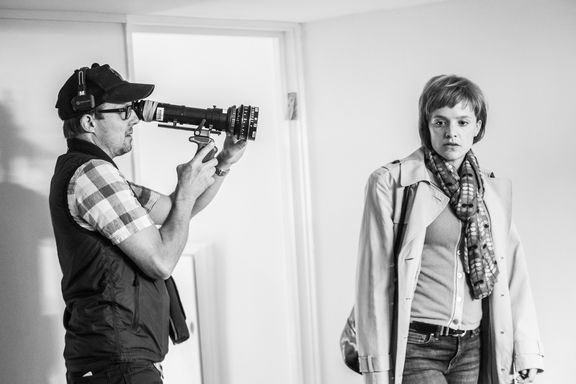
What camera did you use?
I used three cameras: two Sony VENICE 2 and one Sony FX3, which cut together seamlessly. We used the VENICE 2 in Super 35 mode for budgetary reasons. The FX3 is a brilliant little camera and is responsible for about 40% of the shots in the series. I had the FX3 on the STABILEYE handheld gimbal 95% of the time. I couldn’t have worked the way I did without the STABILEYE and the support they provided on this project.
What aspect ratio did you use?
I used 2.40:1 for everything. I didn’t want to stylize it with the aspect ratio. Once the audience got used to the grammar I didn’t want to switch it on them. The script is so fast-paced and jumps between all the elements very quickly. The screen would be dancing all over the place.
Was there any cooperation with the police or any of the original people involved?
Definitely. Because we are portraying people who are still alive and active it would have been a legal landmine for Disney not to. The family was consulted as were quite a few of the victims and some eyewitnesses to Jean’s shooting. London Transport gave us complete support because they wanted the story to be told. Even the Metropolitan police cooperated. Their public image around this incident is so bad that even though the story presents a negative portrayal of them, their public image is so bad that it can’t get any worse to have this story out there and might even help them a little.
There is quite a bit of action and location work on this film.
I’d say about 99% of it was shot at the real locations. We were in London, on the Tube, on the buses, on the streets. We had to create our own Scotland Yard as the location of the period doesn’t exist anymore. Using the real locations presented some challenges though as many were very small, tight spaces: Tube stations and tunnels, moving buses, moving cars, tiny one-bedroom apartments where the bombers met and built their bombs. The actual story took place in summer, but we shot in winter, which was sometimes challenging for the exteriors, but a London summer is sometimes difficult to discern from a London winter. [laughter]
How did you light such tiny spaces?
Lighting was very minimalistic due to the fast pace of the shoot and we tried to use as many motivated practicals as possible, mostly through windows, very naturalistic, which was aided by the exceptional low light performance of the cameras. Mainly it was contrast management, which the lenses made possible by coping so well with the extremes by dealing well with flaring out and ambient flare. In the night scenes we tried to rely on existing street lights as much as possible as well as existing light on the tubes. I wanted a bit of grit to it, a slight rawness. We definitely weren’t trying to over glamorize it.
Was there any discussion about doing virtual production for the scenes in the buses, Tube, and cars?
Not really. Paul likes reality and as this is a real story he wanted it to feel as real as possible and not cheat the audience in any way whatsoever. There’s a true honesty about this series that was important to all of us.
Did you use any filtration on the lenses?
No, I always choose lenses that I like the look of. For me the choice of lens is really important and I want to see the quirks of it optically. If the lens is too sharp for the project I would choose another lens rather than diffuse it.
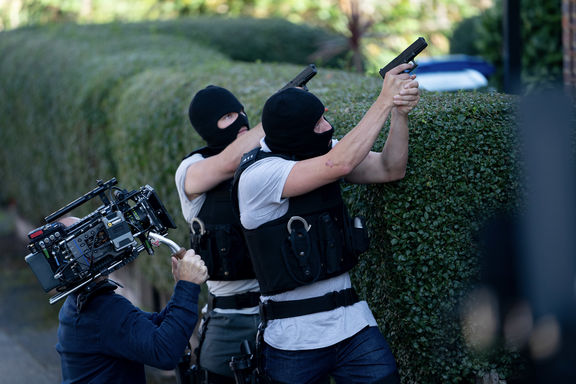
Did you use the HUGO 50mm T1.0 lens at all?
Absolutely, I love it! I had both 50mm lenses, the T1.0 and the T1.5, but rarely used the T1.5. I love the look of the 50mm T1.0 close up at minimum focus or close to it. It’s such a beautiful lens. I don’t think I ever used it fully open, but even at T2.0 it has such an intimate feeling. That’s one of the reasons why I ended up using the HUGOs; they have such an intimate feel about them, especially on the FX3 in full frame mode. The lenses really shine when you can see them in full frame. The 50mm T1.0 for me drives this, but the 35mm and 90mm, I mean, I could shoot a whole film on just those three lenses because there’s such an intimate optical purity to them. They’re really, really beautiful in that sense.
You feel so close to the actors when you put them on the camera, especially when you’re physically close. You just get inside the heads of the characters, which I didn’t feel with the other lenses that I looked at. The intimacy and immediacy is hard to describe, but you feel it immediately.
It’s not just the intimacy though. I wanted the camera to have an energy and the FX3 with the small HUGO lenses gave me a slightly different form factor than I would normally operate with the camera on my shoulder. I wanted to run with the camera, jump into a car and just throw it around inside. I wanted to be a bit braver with the photography on this one, to take more risks, and I felt the lenses combined with the FX3 allowed me to do that. I didn’t want it to feel like you were watching from a distance. The camera needed to be involved.
Were you pushing the ISO on the cameras?
The dual ISO was used to its full extent and purpose. [laughter] With the VENICE I switched between 3200 and 800 all the time depending on the need. Sometimes I shot the FX3 up to 12,800. A lot of the series takes place in dark spaces with silhouettes and a huge range of skin tones. With the bombers we were often under-lighting them. They didn’t want people to see what they were doing. They shut all the curtains, they were active at night and constantly moving.
What stood out to you most about this production?
Working on this series was one of the most demanding and emotionally charged professional experiences I’ve ever had. London, in the days following the attack, was in panic. People were scared. The police were under immense pressure. But, at the core of the story we are telling is a person whose death was a tragic injustice compounded by a lack of institutional accountability that had eroded the public trust in a way that still echoes 20 years later.
This is a story that needed to be told. When I read the script I was gobsmacked about the details that were kept from the public eye. The Met Police had done quite well in trying to hide the details. I also felt like the media had portrayed the suicide bombers so two-dimensionally and it was interesting to get into their heads a bit and find out what motivated them. I don’t agree with their reasons, but it is important to understand why they felt the need to do this. Especially in this day and age, I think it’s important to consider the point of view of both sides.
Suspect: The Shooting of Jean Charles de Menezes is available for streaming as of April 30, 2025 on Disney+ in the UK and Hulu in the USA.
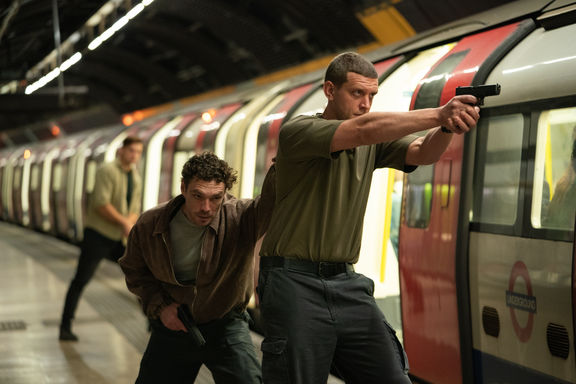

Overview
DoP Balazs Bolygo
DoB March 28, 1975 (age 50 years)
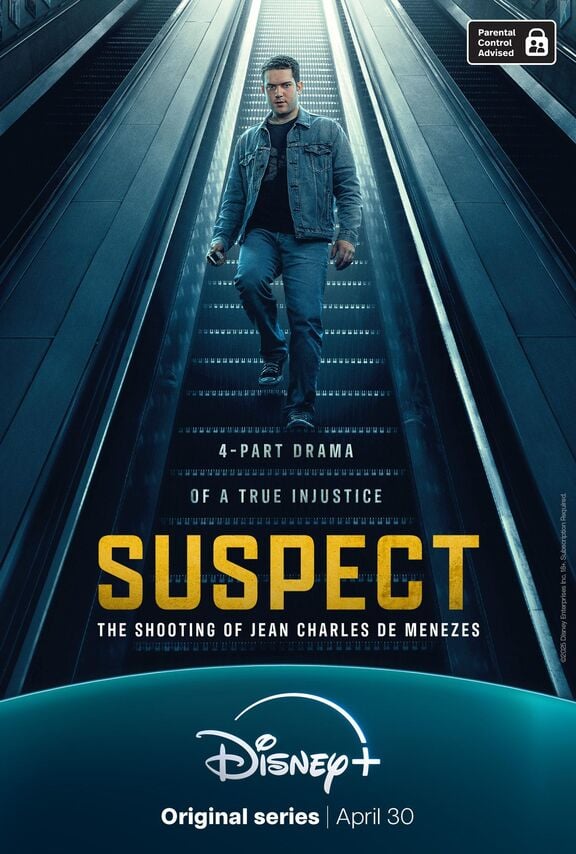
Suspect: The Shooting of Jean Charles de Menezes
2025 | series
DoP Balazs Bolygo, BSC
Director Paul Andrew Williams
Leitz lens HUGO
Camera Sony VENICE 2, Sony FX3
Production Companies Etta Pictures | ITV Studios | KDJ Productions
Distribution Disney+
Country UK
Lens used
HUGO
Legacy
